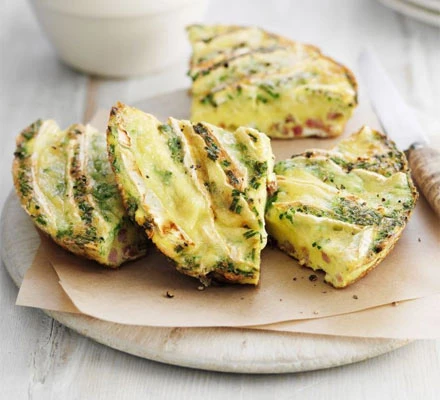Overripe brie
- rosemary
- Jan 25, 2024
- 5 min read
"Let your eyes and nose be your guide. A pleasant aroma reveals hints of moist earth, fresh mushrooms and raw milk, which can be described as an "almost barnyard profile." A darkened color or funky smell means it's time to throw it out." ehow

In my fridge there are always bits and pieces of cheese, because like David Lebovitz who confessed to always buying too much because it looked lovely, we also have too much cheese in the fridge. Mind you ours is not so much because we have visited some gourmet cheese shop or market and been seduced, it's more likely to be because we have forgotten what we have, or have bought for a party and it didn't get eaten.
On the left is today's blog post subject - leftover French Brie from Christmas, with a 'best before' date of 6th January - so two and a half weeks beyond. It's intact, because the cheese course did not happen on Christmas Eve. It doesn't look that great does it and let me tell you it doesn't smell that great either. But it's a whole Brie. Do I really have to just throw it out? Even if it is into the compost - which experts say is a perfectly Ok thing to do. Indeed some even recommended putting some in with your potting mix when potting plants. Take that David!
But back to that smell. That quote at the top of the page, and several other people too, seemed to think that if it's smelly or brown throw it out. And if it's got blue or green mould, then definitely throw it out. But isn't the whole point of blue cheese that it's mouldy and that it stinks to high heaven? Goat's cheese too.
I did browse the net quite extensively and in the end came to the conclusion that it's all a matter of taste unless the ammonia kind of smell is completely overwhelming, and it really is very green or blue.

This is what brie is supposed to look like. Pure white. And you can eat the rind. Indeed you should. It's a delicious cheese - well it is for me. Obviously cheese is a very personal thing. And I do remember the best Brie I ever had - from a very large wheel of Brie - a little thinner than this. It was a true Brie in that it was made from unpasteurised milk and we bought it in a French hypermarket, after a taste and a recommendation from the charming sales lady. It tasted fresh and of milk, so it's a bit odd that I loved it so because I really don't like raw milk.
There are lots of recipes for what to do with Brie - and I'm about to give you a sample of them, but honestly why would you cook with fresh Brie? I reckon that if your Brie is a little overripe then that is when you might cook with it. delicious.UK had seventeen rather delicious looking recipes for Brie of which this Pigs in blankets traybake was one. The BBC Good Food website was also a good source, from which I picked: Brie, apple and onion tart; Brie and cranberry filo parcels and Bacon and brie omelette wedges with summer salad
And of course there are heaps of variations on a simple baked Brie.
So I could cut off a piece of my Brie round, remove the rind and then ponder on whether it's for the bin or for something delicious. I gather it is likely to be soft, even runny, although I have to say that some seemed to think it might be hard. Maybe that's if you have cut into it already. And runny is OK isn't it? I mean I remember my French exchange friend testing Camembert by prodding it with her finger in the middle - if it was soft - once her finger almost went into it - then it's a good one.
The something delicious I am thinking of is fromage fort. I was reassured in this by the picture on the left below, which is of the cheeses that David Lebovitz was confronted with when he made some. None of it looks that great does it? And yet on the right is the finished result. He has obviously added herbs to his as there is a slight green tinge to the finished result, which some writers poo-pooed.
I also found this video from Jacques Pépin - Michelin starred French chef living in the US. He too began with pretty unappetising pieces of cheese, but happily threw it all in after cutting off bits of rind and unappetising somewhat mouldy bits.
Just don't overdo the blue cheese seems to be the general advice - or anything too overpowering. Which will be fine for us as we are not blue cheese fans. Basically it's one of those whatever you have kind of things. You add wine, and garlic and a fair bit of pepper - no salt - there's a lot of salt in cheese. Jacques Pépin even just squashed the garlic cloves, without peeling them before throwing them in the food processor. Maybe something like cream cheese, cream or yoghurt to lighten it further. Maybe some herbs or spices - or as Em McGarrigle at Bon Appétit more or less says - go wild:
"Don’t like white wine or aren’t of legal drinking age? I’ve happily made this with a splash of apple cider vinegar mixed with a little natural apple juice. Red wine? Kombucha? I’m not going to stop you. Have only beer in the fridge? The idea of making this with lots of garlic, sharp cheddar, and a local lager, and then slathering it on a toasted bun for a beer-boiled, grilled bratwurst is going to haunt me until I get the chance to execute it."
You can, of course get fancy - the Australian Studd siblings, briefly cooked their garlic and herbs in oil before adding to the cheese, and they also went for a dessert wine or brandy. A little bit snooty I think. Or you can ferment it - as, in fact was done in the old days, as Jacques Pépin tells you.
“Squash the old cheeses with a fork, add three bottle caps of armagnac per 250g cheese ends, mix and put in a jar. Leave to ferment for two to three weeks, adding more armagnac if it becomes dry. Then enjoy!” Fadi Kattan, chef/The Guardian
Does it disintegrate into a paste, or do you have to mash it once fermented?

What you are after is a dip kind of texture:
"You’re looking for a texture that mimics whipped cream cheese—it should be smooth enough to spread on a cracker but a chip dipped in it probably won’t stand up." Em McGarrigle/Bon Appétit
Mostly the advice is then to just spread on toast and eat, although Jacques Pépin thought that it was even better when grilled on that toast - and curiously milder in taste. But he also had a whole lot of other suggestions for what to do with it - in tarts, and gratins, omelettes, and so on.
OK - I'm going to go and have a look at this Brie and see if I can make it work. I do know there are several other bits and pieces in the cheese drawer. And if the Brie isn't too bad, then maybe it can go into some kind of tart or stuffing. Am thinking on this - more on that another day.
In England they call it Potted cheese, although they put it in a pot and cover with some melted butter. And they may well use beer. Fromage fort means strong cheese which suggests it's supposed to have a bit of a kick. I don't have to put the whole lot in after all - just a small piece.












Comments